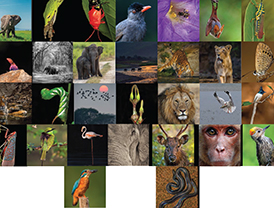 Wildlife photography, like landscape photography, is probably the most sought-after genre of photography for nature lovers. Photographers travel to every nook and corner of the world to indulge in this profession or hobby. And they work real hard – being a wildlife photographer means much more than just being able to afford expensive gear.
Wildlife photography, like landscape photography, is probably the most sought-after genre of photography for nature lovers. Photographers travel to every nook and corner of the world to indulge in this profession or hobby. And they work real hard – being a wildlife photographer means much more than just being able to afford expensive gear.
Unless we are dedicated to wildlife, we cannot really become wildlife photographers. This often means forgetting our personal comforts. A wildlife photographer’s kit can weigh over 20 kilograms (over 46 lbs) and lugging this all around is no joke. It also means getting up early (irrespective of the weather) and staying out late in search of our favourite subjects. For those who want comfort, there’s another hobby – watching TV!
The expensive feature-filled gear that we carry will not make us good wildlife photographers unless we know how to operate the equipment like the back of our hand. Imagine that you have trudged through some very difficult terrain and suddenly come across your subject and you fumble – where’s that damn button that let’s me switch over from Evaluative/Matrix metering to Spot metering? Where’s that silly switch/knob that lets me change the White Balance? Get the point? This of course is true for all genres of photography but there’s a difference here with wildlife. The opportunity that we lose while fumbling over our equipment may never come back!
There’s also an element of luck involved. Sometimes we struggle for days to find that elusive creature and at other times, we see what we are looking for as soon as we enter a wildlife santuary. Finding the right subject is not the only issue. The lighting plays a very important role too. There are times when we need to go to the same location again and again to capture our target in the right lighting conditions.

